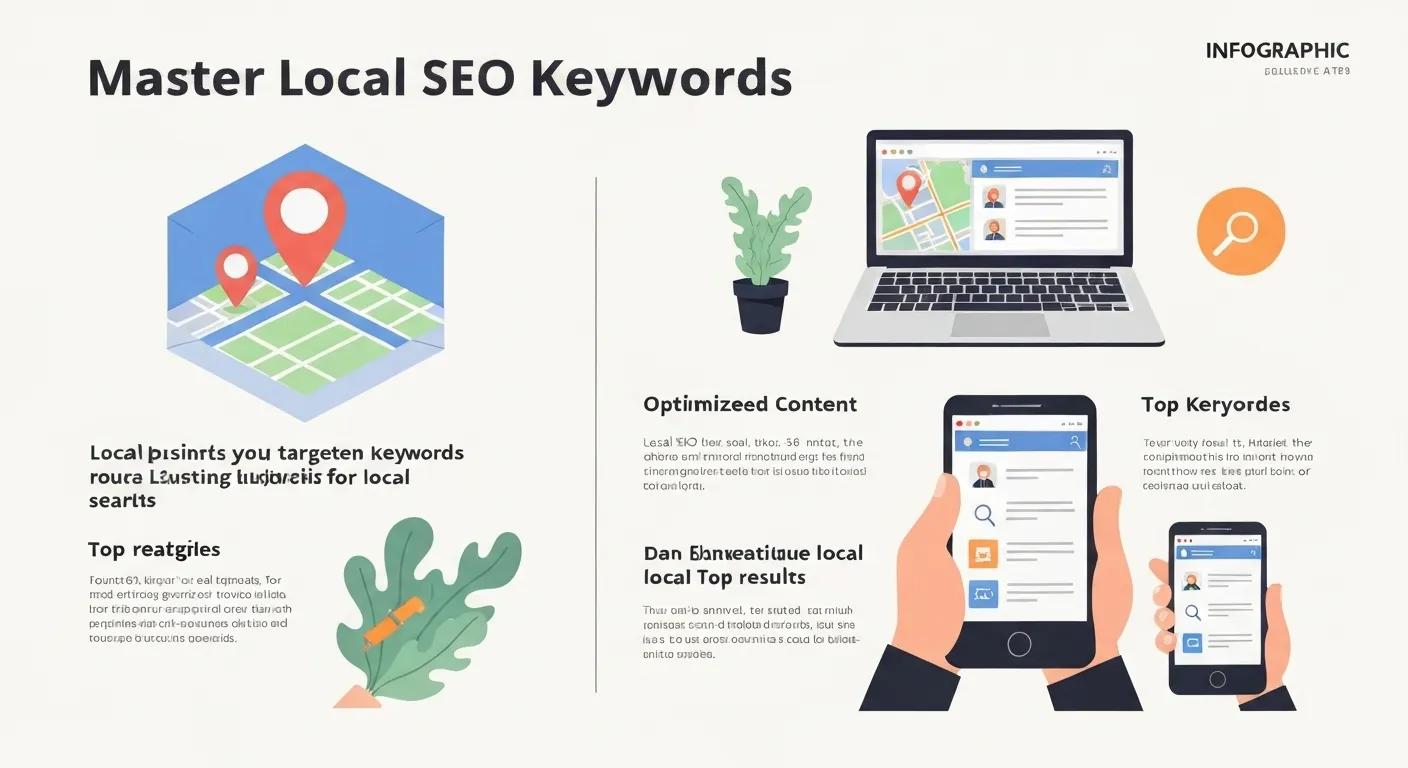Unlocking the Local SEO Power of Client Reviews in Traverse City

Client reviews directly boost local SEO in Traverse City by signaling relevance and credibility to search engines and prospects alike. This article demonstrates how review quantity, recency, and quality influence Local Pack rankings, trust signals, and click-through rates. Readers will discover proven tactics for soliciting feedback ethically, managing and responding to reviews, implementing structured data markup, and leveraging advanced local SEO approaches to maximize visibility. The discussion unfolds in six core themes aligned to our H2 headings:
- Why client reviews drive local SEO success in Traverse City
- Best strategies to acquire reviews for Traverse City businesses
- Management and response best practices
- Structured data and semantic SEO enhancements
- Advanced local SEO tactics complementing reviews
- Measuring and monitoring review impact on SEO
- Real-world Traverse City case studies and actionable takeaways
Why Are Client Reviews Essential for Local SEO Success in Traverse City?
Client reviews are experiential endorsements that influence search engine ranking algorithms by establishing social proof and geographic relevance. When Traverse City businesses accumulate authentic feedback, Google interprets these signals as indicators of local prominence, boosting visibility in the Local Pack and map results.
How Do Reviews Influence Local Search Rankings and the Local Pack?
Reviews serve as direct ranking factors for Google’s local algorithm by contributing to: review management.
- Relevance: Keywords in reviews connect services to user queries.
- Distance: Proximity combined with local reviews strengthens ranking.
- Prominence: High review counts and star ratings indicate popularity.
These collective signals improve a business’s position within the Local Pack and map listings, making it more discoverable for “Traverse City” + service searches.
In What Ways Do Positive Reviews Build Trust and Credibility for Traverse City Businesses?
Positive feedback functions as validated endorsements that: review management
- Enhance consumer confidence through social proof.
- Encourage higher click-through rates from search results.
- Increase conversion by showcasing real customer satisfaction.
By featuring star ratings in SERPs and on Google Business Profile, businesses in Traverse City project reliability, encouraging both search engines and users to prioritize their
.
What Role Does Review Quantity, Quality, and Recency Play in Local SEO?
Review signals break down into three attributes:
| Attribute | Impact Mechanism | Benefit |
|---|---|---|
| Quantity | Volume demonstrates consistent consumer engagement | Higher Local Pack ranking probability |
| Quality | Star rating and sentiment reflect customer satisfaction | Enhanced trust and elevated click-through |
| Recency | Recent reviews signal active business operations | Signals freshness, improving local relevance |
Balancing these attributes ensures search engines recognize a Traverse City business as both reputable and active, optimizing local SEO performance.
What Are the Best Strategies to Acquire Client Reviews for Traverse City Businesses?
Proactive and ethical solicitation methods make the review process seamless, increasing the likelihood of genuine feedback that bolsters local search visibility.
How Can Businesses Ethically Solicit Reviews In-Person, via Email, SMS, and QR Codes?
Request reviews by integrating review management into customer touchpoints:
- In-Person: Train staff to ask satisfied customers at the point of sale.
- Email: Send follow-up messages with direct review links.
- SMS: Use text reminders with one-click submission to Google My Business.
- QR Codes: Display in-store QR codes linking to review pages.
These approaches respect customer experience while maintaining compliance with platform guidelines, ultimately generating authentic local feedback.
Which Review Platforms Are Most Popular and Effective in Traverse City?
- Google Business Profile: Primary driver of Local Pack inputs.
- Yelp: Significant for tourism and dining establishments.
- Facebook: Broad demographic engagement and shareability.
Focusing on these channels maximizes review acquisition where prospects search and where search engines crawl for trust metrics.
How Can Local Events and Community Engagement Boost Review Acquisition?
Leveraging Traverse City’s seasonal events—harvest festivals, summer craft fairs, or downtown art walks—allows businesses to:
- Encourage on-site feedback via event-specific review kiosks.
- Offer post-event email gratitude with review invitations.
- Partner with local associations to cross-promote review campaigns.
Such community-centered tactics align brand presence with local foot traffic, converting engaged attendees into online advocates.
How Should Traverse City Businesses Manage and Respond to Client Reviews?

Active review management demonstrates engagement, fosters customer loyalty, and reinforces local SEO signals through fresh content and trust signals.
What Are Best Practices for Responding to Positive Reviews to Enhance Engagement?
When acknowledging positive feedback, businesses should:
- Personalize responses by mentioning the reviewer’s name and details of their experience.
- Express appreciation and invite repeat visits or referrals.
- Highlight related services or products that complement their positive experience.
Such responses reinforce customer connection, encourage additional reviews, and maintain an updated stream of fresh content for search algorithms.
How Can Negative Reviews Be Turned into Opportunities for Improvement and SEO?
- Thanking the reviewer for honest input.
- Explaining corrective actions taken to resolve concerns.
- Inviting the reviewer to revisit or contact privately for further assistance.
Search engines interpret thoughtful engagement with criticism as authenticity, which can mitigate the SEO impact of lower ratings.
How Does Active Review Monitoring Improve Online Reputation and Local SEO?
Consistent monitoring through alerts and dashboards enables businesses to: services
| Entity | Attribute | Value/Tool |
|---|---|---|
| Google Reviews | Alerts | Google Business Profile notifications |
| Yelp | Monitoring Tools | Yelp for Business owner dashboard |
| Facebook Reviews | Automated Notifications | Page settings email/SMS alerts |
Ongoing oversight ensures timely responses, fresher content streams, and sustained prominence in local search, maintaining a virtuous cycle of engagement.
How Does Structured Data and Semantic SEO Enhance Review Impact on Local Visibility?
Structured markup and entity-rich content help search engines parse reviews, star ratings, and business details, leading to rich snippets and Knowledge Panel features.
What Is Review and AggregateRating Schema Markup and How Does It Boost SERP Appearance?
Implementing JSON-LD and schema transforms raw feedback into machine-readable data: review management.
This markup generates star ratings in SERPs, which have been shown to increase click-through rates by up to 270%.
How Can LocalBusiness Schema Be Used to Highlight Traverse City Business Details?
By embedding schema with attributes like , , , and , businesses anchor their entity within Traverse City’s geographic context—reinforcing location relevance:
- addressLocality: “Traverse City”
- geo.latitude / geo.longitude for map accuracy
This precision empowers search engine knowledge graphs to feature accurate local details in Knowledge Panels.
Why Is Entity-Rich Content Important for Showcasing Reviews and Improving Search Understanding?
Entity-rich narratives (mentioning specific services, neighborhoods, and local landmarks) clarify the context of reviews. For example: “Guests at our Old Mission Peninsula tasting room praise the estate label Riesling.”
Such passages strengthen semantic connections between the business, its offerings, and the Traverse City region, improving search engines’ understanding and boosting relevancy for long-tail queries.
What Advanced Local SEO Tactics Complement Client Reviews in Traverse City?
Beyond reviews, holistic local SEO services practices amplify the impact of feedback by aligning broader optimization signals.
How Does Optimizing Google Business Profile Integrate with Review Management?
A fully optimized GBP includes:
- Complete service categories and attributes.
- Regularly updated posts and offers.
- Review call-to-action buttons.
This synergy between profile completeness and review volume signals authority and encourages conversion directly from the Local Pack.
Why Are Consistent Local Citations and Review Data Critical for Local SEO?
Uniform Name, Address, Phone (NAP) and review metrics across directories—Chamber of Commerce, local directories, industry sites—ensure search engines can corroborate business details. Consistency reduces confusion in entity resolution and enhances trust signals for Traverse City businesses.
How Will AI, Semantic Search, and Voice Search Shape the Future of Local Reviews?
- AI Sentiment Analysis: Extract nuanced opinions from unstructured reviews.
- Semantic Retrieval: Surface businesses based on conceptual match, not just keywords (e.g., “best lakeside dining”).
- Voice Search Integration: Reviews optimized for conversational queries (“What café has great patio views in Traverse City?”) will influence position zero and Local Pack outcomes.
Staying ahead of these trends positions businesses to capture voice and semantic search traffic as algorithms evolve.
How Can Traverse City Businesses Measure and Monitor the Impact of Client Reviews on SEO?
Tracking appropriate metrics ensures continuous optimization and demonstrates ROI on review management efforts.
What Key Metrics Should Be Tracked for Local Pack Rankings and Review Volume?
Monitor:
- Local Pack positions for target service queries.
- Monthly review count and average star rating.
- Click-through rates on Google listings.
These KPIs directly correlate review activity with visibility and engagement.
How Can Review Sentiment Analysis Inform Reputation and SEO Strategies?
Employ sentiment analysis tools to quantify positive, neutral, and negative review trends. Identifying recurring themes—such as praise for ambiance or concerns about parking—allows businesses to refine offerings and targeted content, which can be reflected in on-page optimization and FAQs.
Which Tools Help Monitor Google Business Profile Insights and Structured Data Performance?
Recommended platforms: docksyde
- Google Business Profile Dashboard for real-time customer actions.
- Google Search Console to validate rich result impressions.
- BrightLocal or Semrush Local for integrated review tracking and citation monitoring.
- Google’s Structured Data Testing Tool to troubleshoot markup errors.
These solutions support end-to-end review performance analysis and continued schema health.
What Are Real-World Examples of Client Reviews Driving Local SEO Success in Traverse City?
Examining hypothetical case studies illustrates how review focus translates to tangible local growth.
How Did Traverse City Bakery Increase Local Foot Traffic Through a Targeted Review Campaign?
After launching a post-purchase SMS solicitation, the bakery achieved a 40% increase in Google reviews within three months. As review volume surpassed 150 ratings at an average of 4.8 stars, Local Pack visibility rose from position 5 to position 1 for “artisan bread Traverse City,” doubling in-store foot traffic.
What Lessons Can Be Learned from Grand Traverse Auto Repair’s Online Visibility Growth?
By responding to every review—positive and negative—with professional, detail-oriented messages, the repair shop elevated its average rating from 3.9 to 4.6. This consistency improved map link clicks by 65% and generated a stream of testimonials repurposed on their services page, enhancing organic rankings for “Traverse City auto mechanics.”
How Can Businesses Replicate These Review Strategies for Their Own Local SEO Gains?
Key takeaways for replication:
- Implement multi-channel review requests timed at peak satisfaction moments.
- Integrate review schema to capture star ratings in SERPs.
- Monitor and respond promptly to maintain high recency.
- Leverage positive feedback in local content and social media.
Adopting these practices ensures sustainable local SEO success driven by authentic customer voices.
These proven review management and optimization strategies empower Traverse City businesses to enhance their local search presence, foster consumer trust, and secure lasting competitive advantage.
Frequently Asked Questions
What are the long-term benefits of accumulating client reviews for local businesses?
Accumulating client reviews offers numerous long-term benefits for local businesses. Over time, a robust collection of positive reviews can significantly enhance a business’s online reputation, leading to increased customer trust and loyalty. This trust translates into higher conversion rates as potential customers are more likely to choose a business with a strong review profile. Additionally, consistent positive feedback can improve search engine rankings, making the business more visible in local search results, which can lead to sustained foot traffic and sales growth.
How can businesses effectively handle fake or spam reviews?
Handling fake or spam reviews requires a proactive approach. Businesses should regularly monitor their review platforms and report any suspicious content to the respective site administrators. Most platforms, like Google and Yelp, have mechanisms for flagging inappropriate reviews. Additionally, responding to fake reviews professionally can demonstrate to potential customers that the business is engaged and values genuine feedback. It’s also beneficial to encourage satisfied customers to leave authentic reviews, which can help dilute the impact of any negative or false feedback.
What role does customer engagement play in generating more reviews?
Customer engagement is crucial in generating more reviews. Engaged customers are more likely to share their experiences and provide feedback. Businesses can enhance engagement by creating personalized interactions, such as follow-up emails thanking customers for their purchase and inviting them to leave a review. Hosting events, offering loyalty programs, or utilizing social media to connect with customers can also foster a sense of community. When customers feel valued and connected to a brand, they are more inclined to share their positive experiences through reviews.
How can businesses use reviews to improve their services or products?
Reviews provide valuable insights into customer preferences and experiences, which businesses can leverage to enhance their services or products. By analyzing feedback, businesses can identify common themes, such as frequently praised features or recurring complaints. This information can guide product development, service adjustments, and customer service training. Additionally, addressing specific concerns raised in reviews can demonstrate to customers that their opinions are valued, fostering loyalty and encouraging further positive feedback in the future.
What are the best practices for showcasing reviews on a business website?
Showcasing reviews on a business website effectively can enhance credibility and attract new customers. Best practices include displaying a selection of recent and diverse reviews prominently on the homepage or a dedicated testimonials page. Incorporating star ratings and customer photos can make the reviews more relatable. Additionally, using structured data markup can help search engines understand and display reviews in search results, potentially increasing click-through rates. Regularly updating the showcased reviews ensures that the content remains fresh and relevant, reflecting the current customer experience.
How can businesses encourage repeat reviews from satisfied customers?
Encouraging repeat reviews from satisfied customers can be achieved through strategic follow-up and engagement. After a positive interaction, businesses can send personalized thank-you emails that include a direct link to the review platform. Offering incentives, such as discounts or loyalty points for leaving a review, can also motivate customers to share their experiences. Additionally, maintaining ongoing communication through newsletters or social media can keep the business top-of-mind, prompting customers to return and leave feedback after future visits.







